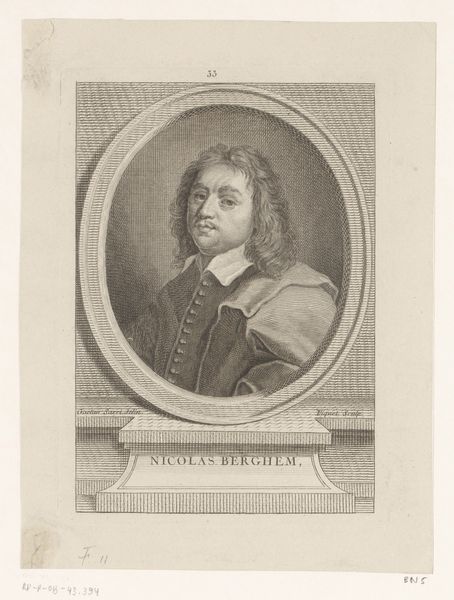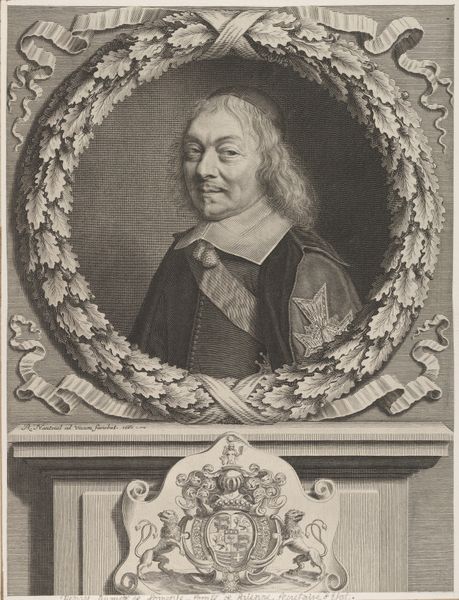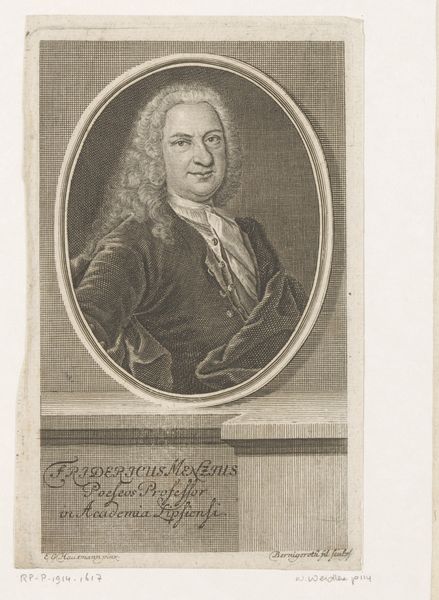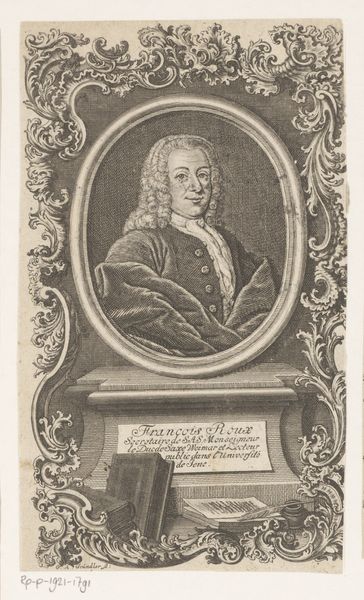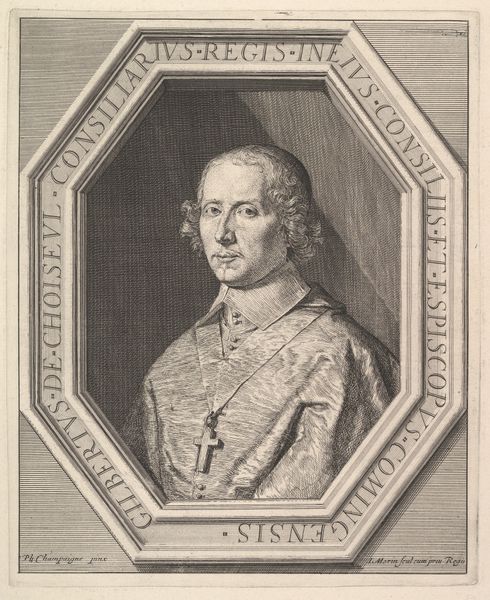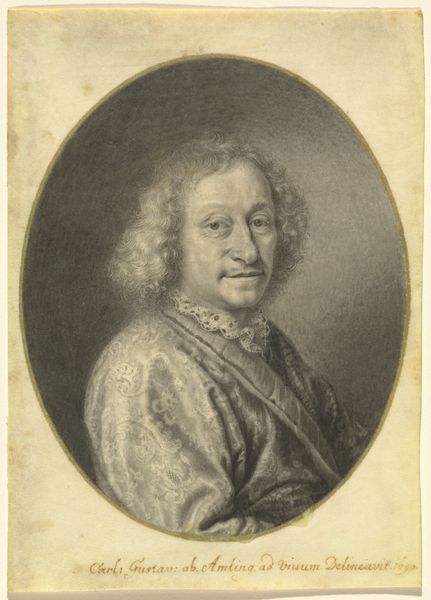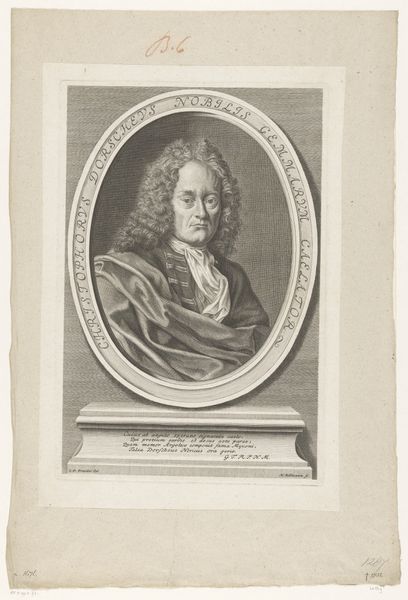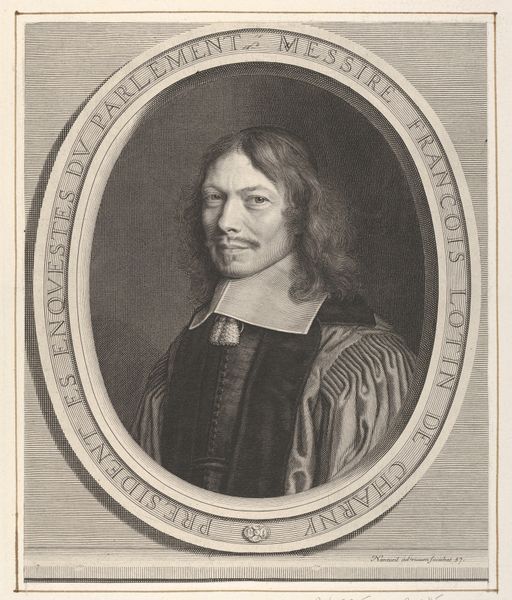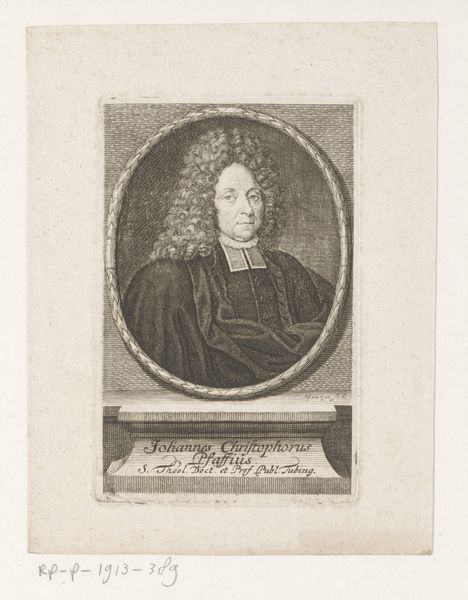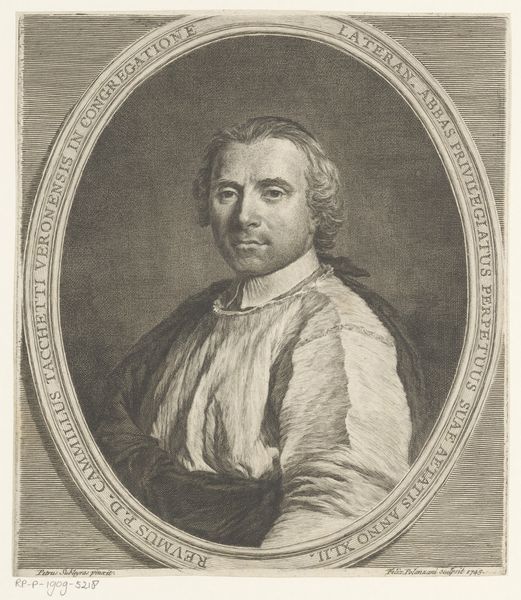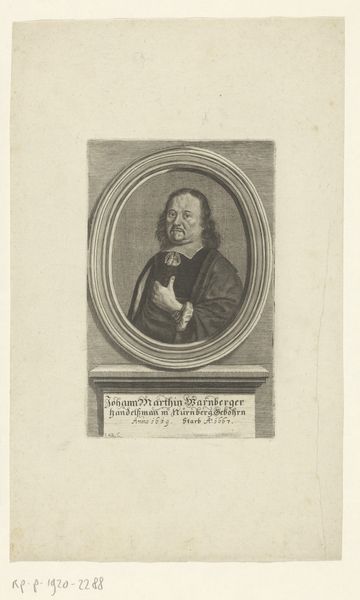
drawing, pencil
#
portrait
#
drawing
#
baroque
#
pencil drawing
#
pencil
#
history-painting
Dimensions: overall: 26.6 x 24.1 cm (10 1/2 x 9 1/2 in.)
Copyright: National Gallery of Art: CC0 1.0
Editor: Here we have "Peter the Great of Russia," a pencil drawing by Carl Guttenberg. I am really drawn to how the artist has managed to capture the texture of his clothes with just a pencil. What stands out to you in this portrait? Curator: It's fascinating how this drawing invites us to consider the *making* of power, not just the representation of it. Guttenberg, working with the relatively accessible material of pencil, democratizes the image of a figure like Peter the Great. Traditionally, portraits of rulers would involve oil paint, gilded frames...materials meant to reinforce the subject's elevated status. Here, it's the labor of mark-making, the sheer *volume* of pencil strokes, that commands our attention. Editor: So, you’re saying the choice of medium itself challenges this image of authority? Curator: Precisely! Think about who had access to graphite, to paper. Was this intended for mass consumption? How does a drawn portrait function differently in society than a painted one? Moreover, the portrait sits within a drawn, decorative oval frame, blurring the lines between "fine art" and applied art – like printmaking for popular consumption. This pushes us to question art hierarchies of the period. Editor: That's a point I hadn’t considered. It is a pretty straightforward medium... it definitely brings an accessible feel. Curator: Exactly. And by focusing on these material conditions and the means of production, we begin to see this image less as a straightforward depiction of a ruler, and more as a complex artifact of its time, reflecting the social and economic forces that shaped its creation and reception. Editor: Thank you. I understand the drawing so much more now, viewing it from this perspective.
Comments
No comments
Be the first to comment and join the conversation on the ultimate creative platform.
